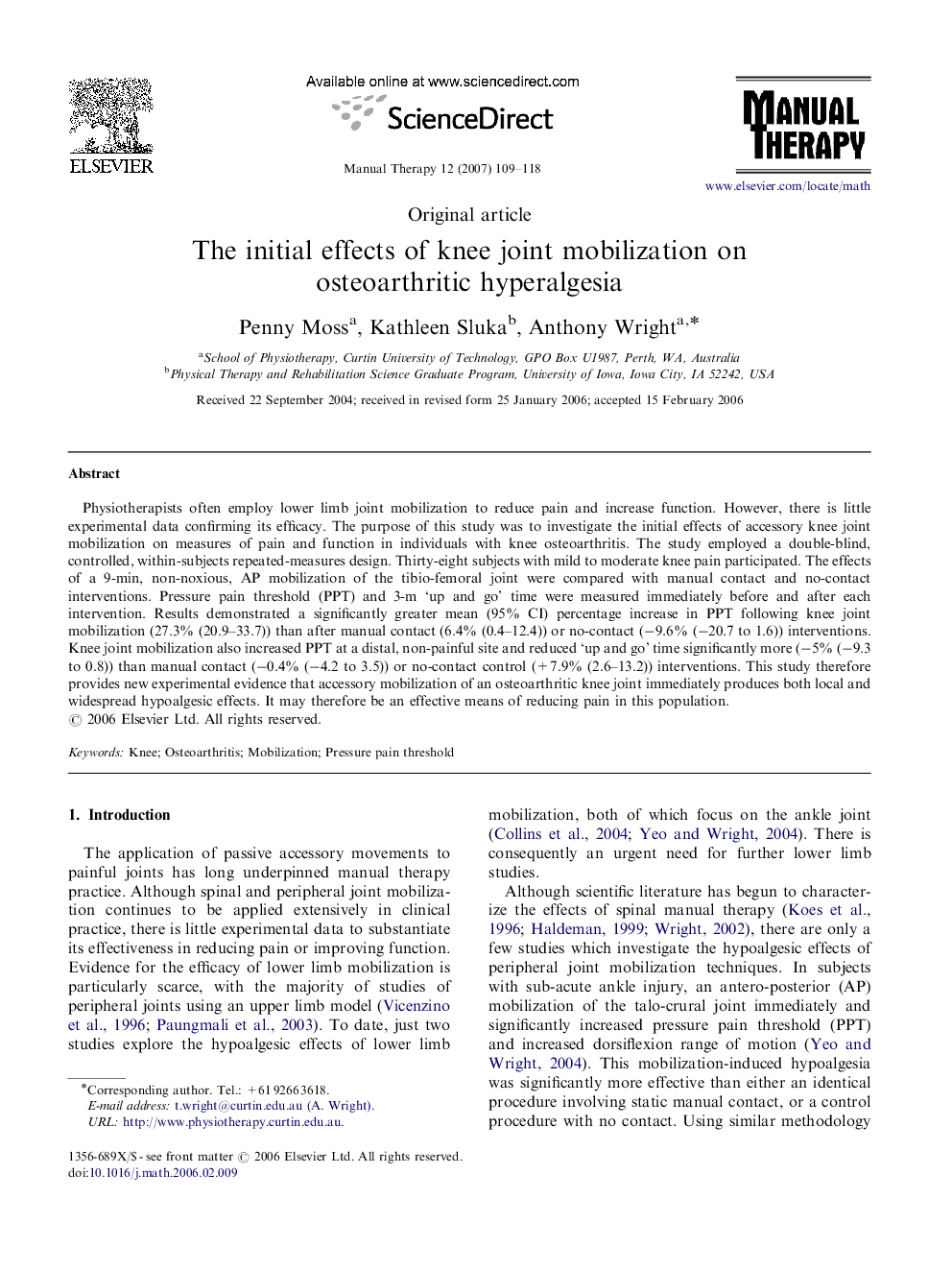| کد مقاله | کد نشریه | سال انتشار | مقاله انگلیسی | نسخه تمام متن |
|---|---|---|---|---|
| 2625768 | 1135964 | 2007 | 10 صفحه PDF | دانلود رایگان |

Physiotherapists often employ lower limb joint mobilization to reduce pain and increase function. However, there is little experimental data confirming its efficacy. The purpose of this study was to investigate the initial effects of accessory knee joint mobilization on measures of pain and function in individuals with knee osteoarthritis. The study employed a double-blind, controlled, within-subjects repeated-measures design. Thirty-eight subjects with mild to moderate knee pain participated. The effects of a 9-min, non-noxious, AP mobilization of the tibio-femoral joint were compared with manual contact and no-contact interventions. Pressure pain threshold (PPT) and 3-m ‘up and go’ time were measured immediately before and after each intervention. Results demonstrated a significantly greater mean (95% CI) percentage increase in PPT following knee joint mobilization (27.3% (20.9–33.7)) than after manual contact (6.4% (0.4–12.4)) or no-contact (−9.6% (−20.7 to 1.6)) interventions. Knee joint mobilization also increased PPT at a distal, non-painful site and reduced ‘up and go’ time significantly more (−5% (−9.3 to 0.8)) than manual contact (−0.4% (−4.2 to 3.5)) or no-contact control (+7.9% (2.6–13.2)) interventions. This study therefore provides new experimental evidence that accessory mobilization of an osteoarthritic knee joint immediately produces both local and widespread hypoalgesic effects. It may therefore be an effective means of reducing pain in this population.
Journal: Manual Therapy - Volume 12, Issue 2, May 2007, Pages 109–118